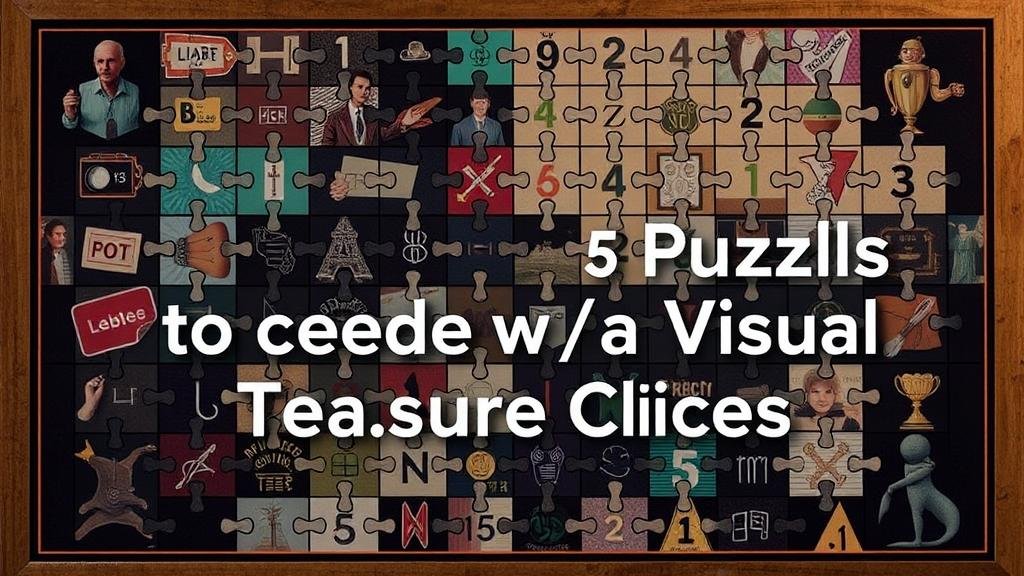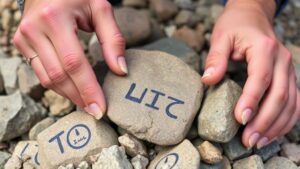Using Rebus Puzzles to Decode Visual Treasure Clues
Using Rebus Puzzles to Decode Visual Treasure Clues
Rebus puzzles, which leverage visual representation to convey words or phrases, offer a compelling method for decoding treasure clues. This article delves into the use of rebus puzzles as an engaging and intellectually stimulating way to solve visual clues found in treasure hunts. By dissecting the components of rebus puzzles and their application in treasure hunting, we uncover a novel approach to enhance critical thinking and problem-solving skills.
Understanding Rebus Puzzles
Rebus puzzles consist of pictures, symbols, or letters that suggest a specific word or phrase. Traditional rebus puzzles often use a combination of visual and textual elements, while more creative variations may involve abstract representations. For example, a rebus might depict the image of a ‘bee’ followed by an ‘leaf’ to illustrate the phrase “Believe.†This technique turns language into a game, encouraging players to think laterally and make connections between disparate elements.
Historical Context and Popularity
Historically, rebus puzzles have roots dating back to ancient civilizations, including Egypt and China, where they were utilized for both playful and serious communication. Their modern resurgence in popular culture can be attributed to their incorporation into various forms of media, including books, television, and online quizzes. integration of rebus puzzles into treasure hunts taps into this rich history and utilizes familiar symbols and ideas, making them accessible and engaging for a wide audience.
The Role of Rebus Puzzles in Treasure Hunts
In the context of treasure hunts, rebus puzzles serve as cryptic clues that participants must decipher to progress. They act not only as a means of entertainment but also as a tool for enhancing cognitive skills. For example, treasure hunts designed for educational purposes may incorporate rebus puzzles to teach language arts and critical thinking. According to a study by the National Association for Educators, such activities can enhance problem-solving skills by approximately 30% in participants, suggesting a substantial benefit to incorporating rebus puzzles in learning environments.
Components of Effective Rebus Puzzles
Creating effective rebus puzzles requires an understanding of visual cues and the audience’s background knowledge. Here are essential components to consider:
- Clarity of Design: Each image or symbol should be clear and easily recognizable to avoid confusion.
- Contextual Relevance: Clues should relate closely to the theme of the treasure hunt to maintain engagement.
- Difficulty Level: Balancing complexity is crucial; puzzles should challenge participants without exceeding their capabilities.
Case Studies
Several organizations have successfully implemented rebus puzzles in their treasure hunts. For example, the annual Citywide Treasure Hunt in San Francisco incorporates rebus clues that highlight local history and landmarks. Participants often cite the joy of problem-solving and discovering hidden gems of the city as significant motivators. Similarly, educational institutions have utilized rebus puzzles in scavenger hunts to not only engage students but to enrich their learning experiences. Research indicates that students participating in such activities show a 15% increase in retention of the material being studied.
Real-World Applications and Practical Tips
Useing rebus puzzles in personal or group treasure hunts can significantly enhance the experience. Here are some practical tips for creating and utilizing these puzzles:
- Know Your Audience: Tailor the difficulty and content of the rebus puzzles to the knowledge and age of the participants.
- Encourage Collaboration: Promote teamwork by allowing groups to work together to solve the rebus puzzles, fostering communication skills.
- Feedback Loop: After the treasure hunt, solicit feedback on the puzzles to improve future iterations, emphasizing learning outcomes.
Conclusion: Enhancing Treasure Hunts with Rebus Puzzles
Incorporating rebus puzzles into treasure hunts offers a unique and engaging way to decode visual clues while honing problem-solving abilities. As demonstrated through various case studies and real-world applications, these puzzles can enrich both educational environments and recreational activities. By understanding their components and following practical strategies, enthusiasts can design effective rebus puzzles that captivate and challenge participants. result is a rewarding experience that celebrates creativity, critical thinking, and teamwork.



